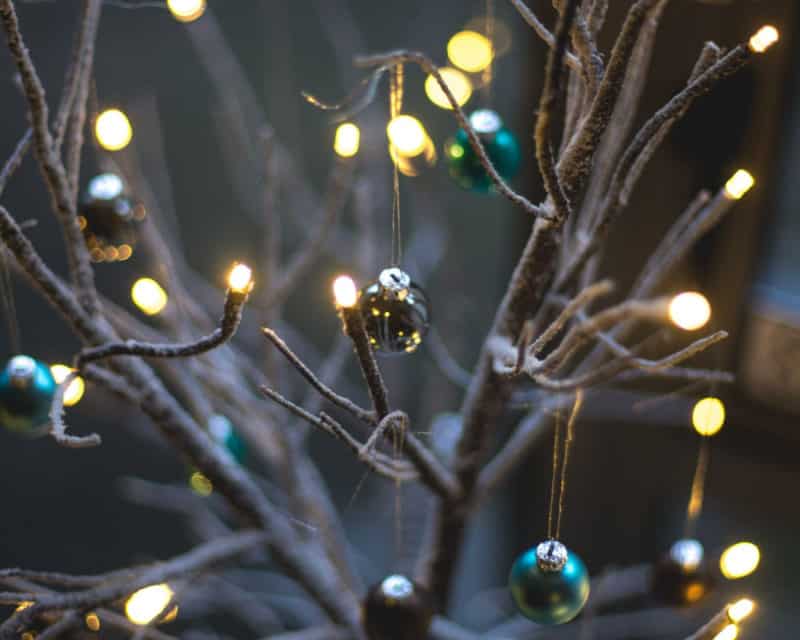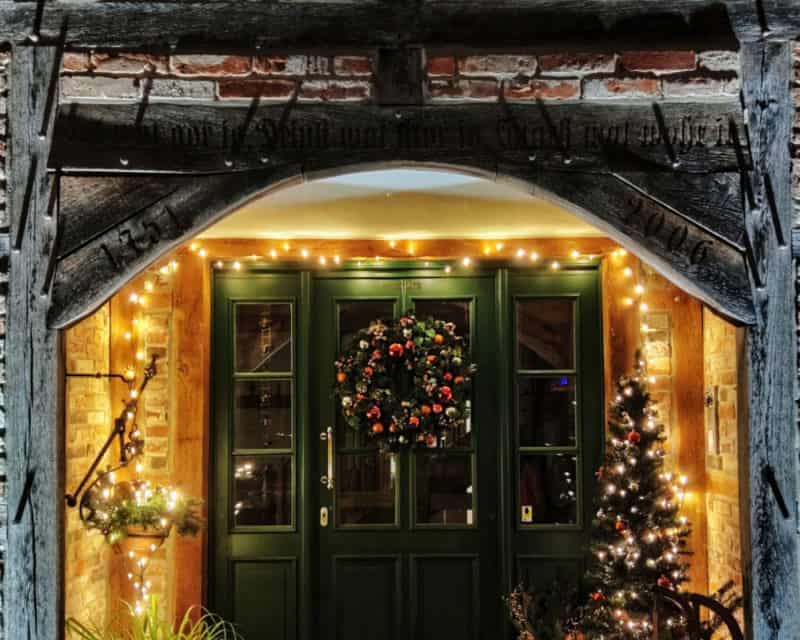If you’re interested in creating a dazzling display of Christmas cheer for your guests, LED Christmas lights should be at the forefront of your mind. These lights are preferable to incandescent lights for several reasons.

To start, they are more energy-efficient and wind up saving you money in the long run. Additionally, these lights are easy to store, easy to install, and less hazardous for pets and small children.
This article discusses the many benefits of LED Christmas lights compared to incandescent bulbs. Use it to create the Christmas light design of your choice so that you’re always prepared to create fantastic light displays.
What Are LED Lights?
LED stands for light-emitting diode. These lights emit light up to 90% more efficiently than traditional incandescent light bulbs. LEDs aren’t technically bulbs. They are semiconductors wrapped in plastic that protect the components and focuses the light.
Diodes have two terminals that allow the current to pass through one direction. They also don’t have filaments, which improves their longevity significantly.
How Do LED Christmas Lights Work?
How do LED lights work? Electrical currents pass through a microchip, illuminating the LEDs and result in visible light. To improve incandescent light performance, LEDs use a heat sink to absorb the heat LEDs produce.
How Is LED Different from Incandescent?

Incandescent light bulbs are what we typically identify with when we hear the word “light bulb.” The primary difference between LED lights and incandescent light bulbs is that incandescent bulbs have filaments that glow, producing heat and light. LEDs have electrons in them that create photons of light- they don’t generate heat.
Energy Savings
LEDs use less energy than incandescent bulbs, making them the more energy-efficient choice. Filaments produce almost no heat compared to incandescent bulbs. The saved heat expenditure translates to saved energy. The vast majority of LED energy is dedicated to producing light, and they lose little energy to heat.
LEDs are effectively phasing incandescent light bulbs out of the picture due to their energy inefficiency. Incandescent bulbs also produce greenhouse gases, increasing their impact on the environment when compared to LEDs.
Lastly, LED bulbs require less wattage to run than incandescent bulbs. You can save up to 80% on your electric bill using LEDs compared to incandescent bulbs. These savings are beneficial for people looking to bolster their Christmas light display.
Durability
LED Christmas lights are significantly more durable than incandescent light bulbs. LEDs last around 50,000 hours compared to standard bulbs, which only last up to 1,000 hours. It’s not even close- LED bulbs to give you up to 50 times the Christmas cheer than incandescent bulbs.
The increased lifespan of LEDs means that, despite their increased price, they save you long-term replacement costs on bulbs. In addition to their inherent longevity, LEDs are less likely to blow or short than incandescent bulbs.
Newer LED models also use copper strands rather than insulated cords. The insulated cords often become entangled and break easily, whereas the copper cord lasts longer and makes for easier replacement.
Safety

Since LED Christmas lights don’t produce as much heat, they are less likely to result in fires than incandescent bulbs. Not only will you keep your tree intact, but you won’t have to worry about your house catching on fire, which is always a plus during the holidays.
The safety feature on LEDs is handy for families with children or pets. If little ones get near Christmas lights or chew on the wire, they can quickly get burned. LEDs prevent this from happening.
Storage
Incandescent lights can be a pain to store. Incandescent lights are made of glass. Because of their glass construction, they are fragile and break easily. You need to wrap and cover the bulbs carefully, so they don’t sustain damage. Even after using these precautions, you might still cause them harm.
On the other hand, LEDs are plastic, and you can wrap them and store them anywhere without worrying about their fragility. Seriously, you have to try to break LED lights. Because they’re durable, you wind up saving money every year on repair and replacement costs.
Heat
As previously mentioned, LED lights don’t produce as much heat as incandescent bulbs. Because they don’t make as much heat, you can leave LED lights on for hours without worrying about potential fire hazards. The decreased heat not only leads to reduced safety concerns. It also leads to energy savings.
Maintenance
Because LED lights hardly ever break, you don’t need to perform maintenance as often. Their durable construction makes them the ideal Christmas decoration. Durable, low maintenance, and easy to install, what more could you ask for?
Versatility

If all those benefits aren’t enough to convince you, LED Christmas lights are also much more versatile than incandescent bulbs. They come in more shapes and sizes and work for varying applications. On top of them coming in more shapes and sizes, LED Christmas lights to require less maintenance and upkeep, meaning you can use them year-round for different purposes without conducting repairs.
Conclusion- What Are the Benefits of LED Christmas Lights?
The advantages of LED lights are clear and undeniable. They save on energy. They’re more environmentally friendly, more durable, less hazardous, and more versatile. It’s only a matter of time before incandescent lights are a thing of the past, and Christmas light manufacturers discontinue their incandescent lines.
If you’re considering Christmas lights for your elaborate Christmas light display, it’s a no-brainer. Go pick up some red and green LED lights and enjoy your holidays.

